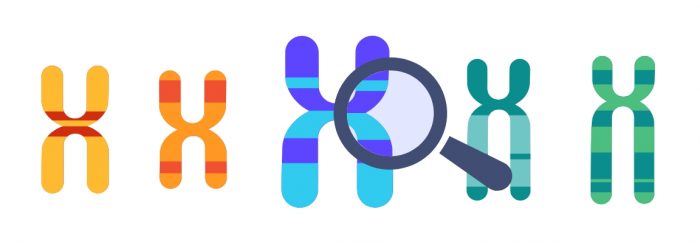Always talking about strange concepts and complicated biology, it’s almost a novelty that we’re not talking about something “novel.” At least blood is familiar to all of us.
But what is blood? Besides being the engine of half the horror movies. We could define it as a liquid considered within the connective tissues, which flows through the circulatory system with the function of transporting nutrients and oxygen throughout the body, and collecting waste substances to take them to areas of degradation and expulsion.
A mix between a food delivery company and a garbage collection service.
Its main composition consists of blood cells and blood plasma (the liquid part proper). The most well-known blood cells are erythrocytes, and they deserve it since they give blood its color. The others are leukocytes or white blood cells (in contrast to erythrocytes, which are also called red blood cells) and platelets (which are unique to mammals).
Erythrocytes transport blood and a portion of carbon dioxide, leukocytes belong to the immune system, and platelets participate in the coagulation processes to prevent bleeding. An efficient division of tasks.
The reason for the red colour is the hemoglobin carried by erythrocytes to perform their functions, which contains iron. In fact, hemoglobin is a bright red when bound to oxygen and a darker red when free. That’s why blood in arteries and veins has a different colour.
And indeed, red blood cells are the most abundant cells in the body. A notable achievement. Especially when you consider that they only live for 120 days, the same lifespan as a cactus.
In some animals, blood is blue because, instead of iron, they use copper to bind and transport oxygen. Their transport protein is known as hemocyanin.
Blood plasma is mostly water filled with lovely things. These lovely things include glucose, minerals, waste substances (okay, this one isn’t lovely). It also contains proteins, although in smaller quantities than the rest of the tissues, something well-known to hematophagous animals. The most abundant protein is albumin, which is used to regulate the osmotic pressure of the fluid.
Interestingly, blood plasma, lacking erythrocytes, is not red in colour. It has a translucent yellow colour; a red hue would imply contamination. If blood plasma has its coagulation factors removed, it is called blood serum. The difference between plasma and blood serum is the presence or absence of coagulation factors and, with them, the ability to clot.

Properties and Miracles of Blood
Approximately 7% of our body weight is made up of blood, which amounts to about 4-5 liters in an adult. In case you’re wondering, yes, blood weighs similar to water, with one liter of blood weighing a little over one kilogram. Add a little extra for the solid components it carries.
Now, speaking of its physical properties, blood has a slightly, very slightly, basic pH. It has a pH between 7.35 and 7.45. The balance is strongly regulated by the body, with active participation from the respiratory and urinary systems. Among other reasons, because if it drops below 7 or reaches 8, the chances of dying are high.
Another value that needs to be closely monitored is blood pressure. Blood pressure is the force exerted by blood against the walls of the arteries (which is why it’s sometimes referred to as arterial pressure) when it is pumped by the heart. When the heart pumps blood through your arteries like a water gun, that blood collides with the blood vessel walls as it continues its journey.
Due to a long-standing tradition, blood pressure is measured in millimeters of mercury (mmHg). The normal blood pressure in an adult is around 120/80 mmHg, depending on the phase of the cardiac cycle. These values are not fixed and can vary significantly among individuals. Blood pressure is dependent on multiple factors, including genetics. When the values are too low, it’s called hypotension, and when they are too high, it’s called hypertension.
Another well-known property of blood is blood types. The two systems used are the ABO blood group system and the Rh factor.
The blood types are A, B, AB, and O. They are named based on the antigens present on the surface of erythrocytes (red blood cells) — antigens A, B, both, or none. Depending on the antigens present on the erythrocyte, there will be antibodies against the antigen that is absent. For example, a person with blood type A would have antigen A on their erythrocytes and antibodies against B in their blood.
This is why people with blood type AB are called universal recipients. They don’t have antibodies against any antigens and can receive blood from anyone. On the other hand, people with blood type O, who lack antigens, are universal donors. Their erythrocytes do not cause rejection by any antibodies, and their blood can be transfused to anyone.
Additionally, there is the Rh factor. It is a protein found on erythrocytes that differentiates blood into Rh+ or Rh-. Rh-negative means that the protein is either absent or modified, and individuals with Rh-negative blood produce antibodies against Rh+ (the opposite does not occur). The Rh factor is independent of the ABO blood group system. For example, a person with B- blood type would have erythrocytes with antigen B and possess the Rh- protein.
A Troublesome Fluid
As part of the body, blood also enjoys having accidents, diseases, genetic problems, and randomly putting your life at risk.
An adult can lose 20% of their blood before showing symptoms, and up to 40% before experiencing shock. The advantage of blood being mostly water is that the body can replenish it relatively quickly.
In the case of bleeding, the coagulation cascade is activated to form clots and stop the bleeding. There are diseases, such as hemophilia A, where this process cannot be carried out optimally due to a deficiency in one element of the cascade, prolonging bleeding and putting the individual’s life at lethal risk.
We also have diseases that are precisely the opposite. If the blood forms unnecessary clots or necessary clots that have detached and circulate through the blood vessels, there is a risk that they may reach extremely small capillaries and block them. This prevents circulation, and the affected tissue does not receive the blood it needs to function. Ischemias frequently occur due to this.
Thrombophilias are a group of diseases in which individuals have a predisposition to clot more easily or have difficulty in dissolving formed clots. It is believed that half of the people who have had a thrombosis suffer from thrombophilia.
Blood coagulation can sometimes cause more problems than it solves.
Being composed of cellular populations, blood is a tissue that can develop cancer. These are called hematological cancers or blood neoplasms. Since neither erythrocytes nor platelets have DNA, they cannot develop cancer. Only immune system cells in the blood can become cancerous.
Depending on the cell affected, and the region of onset, there are more than 100 blood tumors, which are differentiated into lymphomas (the most frequent), leukemias and myelomas.
The summary is that blood is as fascinating as it is repulsive. Let’s be honest, it does give a bit of disgust. We only show you the fascinating part with the DNA Advanced Kit.



